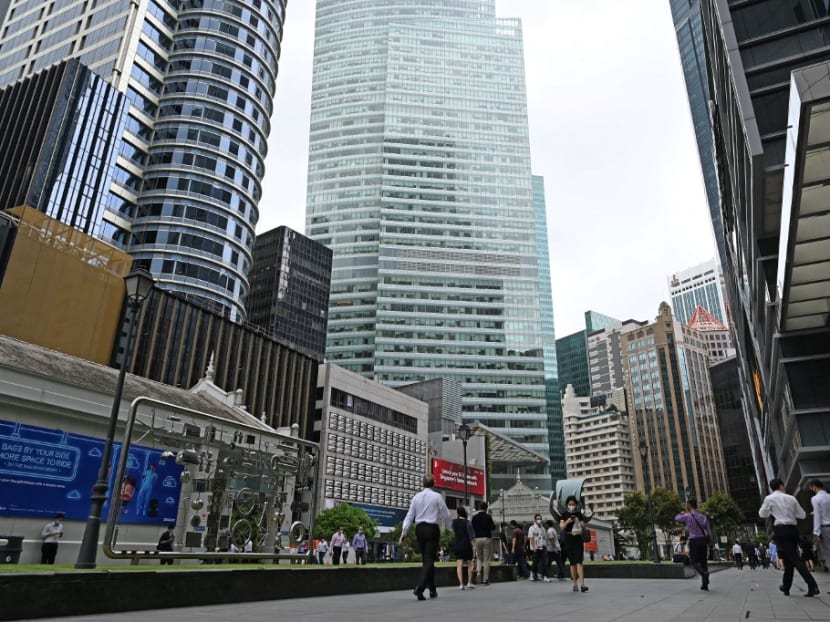IPS researchers propose Govt funds more projects through borrowing in wake of fiscal challenges posed by Covid-19
SINGAPORE — Two researchers from the Institute of Policy Studies (IPS) have called on the Government to expand its use of debt as a way to fund more types of public projects.
- Two IPS researchers called on the Government to expand its use of debt to fund more types of public projects
- They put forth a new debt policy framework to suggest how this can be done
- Economists said that limits need to be imposed on the type of projects that qualify
- This is because an unnecessary debt burden may be placed on future generations otherwise
SINGAPORE — Two researchers from the Institute of Policy Studies (IPS) have called on the Government to expand its use of debt as a way to fund more types of public projects.
In a new working paper published on Tuesday (Feb 7), researchers Christopher Gee and Kunal Pawa propose that a more sustainable model of managing public debt is necessary because Singapore’s public finances are under stress due to the ongoing pandemic ans there is a rise in social spending due to its ageing population.
To address this, they have put forward a new policy framework that outlines how the Government can issue, spend and pay back debt in a way that does not place the burden on the present or future generations.
THE GOVERNMENT’S POSITION
During Budget 2019, Deputy Prime Minister Heng Swee Keat said that the Government adopts a “differentiated fiscal strategy” towards the country’s spending needs.
When it comes to funding recurrent spending needs in areas such as healthcare, preschool education and security, the Government will do so through recurrent revenues such as taxes, rather than through borrowing.
This is so that the burden of paying for today’s needs are not shifted onto future generations, Mr Heng said then.
However, for long-term infrastructure projects, such as the construction of Changi Airport Terminal 5 and the new Cross Island MRT Line, Mr Heng, who is also Finance Minister, said that the Government was exploring the option of using its debt to partially fund such projects.
He said then that this would be “fairer and more efficient” since these were “large and lumpy” expenditures that will benefit future generations of Singaporeans.
Before this, the authorities last borrowed in the 1980s to build Singapore’s first MRT rail lines. Statutory boards and other government-owned companies have also continued to finance major infrastructure projects through borrowings.
WHY THIS MATTERS
Now, the IPS researchers are suggesting in their new paper that the Government can further expand its use of debt as a way of financing more public projects, and there are several factors that would necessitate this in the long run.
For one thing, the Covid-19 pandemic has placed significant strain on Singapore’s public finances, and the Government will likely need to set aside more money to support the country’s economic recovery.
Not only that, the researchers pointed out that the revenue generated by taxes is likely to fall due to the ongoing recession. The planned Goods and Service Tax hike has also been pushed back, though it will still take effect by 2025.
During a media briefing on Tuesday, Mr Gee noted that before the pandemic, social spending in Singapore has already been on the rise due to the country’s ageing population. Sooner or later, tax revenue will not be enough to cover the increased spending.
While Singapore’s net investment returns contributions (NIRC) helps to offset some of these costs, Mr Gee pointed out that it is already the single largest contributor to the Government’s coffers and there is a limit to how much it can be relied on as a funding source.
Moreover, in the current low interest rate environment, there is also a limit to how much the funds can be accumulated under the NIRC, and therefore, its growth “cannot be assumed”.
Therefore, borrowing will become necessary at some stage, Mr Gee said.
WHAT THEY ARE PROPOSING
In their paper, the researchers have put forward a debt issuance framework, which spells out what areas of expenditure the Government can consider to use its debt and how the debt can be issued and paid back.
1. How the debt can be issued
The researchers suggested that the debt be issued under Singapore Government Securities (SGS) bonds, but be marketed differently from existing types of borrowing
There should be budgetary disclosure of the borrowing as well as the use of borrowing
The bonds should be fixed-rate only and the borrowing should be in Singapore dollars
The bonds issued should be 30 years in maturity or longer
2. How the debt can be spent
The researchers proposed that the debt issued be used exclusively for development expenditures for the financial years between 2021 and 2025
Under Singapore’s budget, development expenditures are capital investments under each ministry’s individual budgets
Examples of such public projects include funds needed for climate change protection and mitigation, the National Cancer Centre and the new Singapore Institute of Technology campus
These investments, like the ones listed, often have the potential to improve the welfare of future generations
As long-term investments, they also can directly and indirectly benefit future generations
3. How the debt can be repaid
The debt should be paid according to a priority framework
User fees — from people that directly benefit from the investment — should be used to service the debt where possible
Taxpayers from the present or younger generation should pay for the investments
The debt should be regularly paid off over the maturity of the bond to smoothen the tax burden of servicing debt
There should be no accumulation or rolling over of debt, which would burden future generations
In response to TODAY’s queries, a Ministry of Finance spokesperson said the ministry has received the working paper and is studying the suggestions proposed by the researchers.
The spokesperson also noted that in the last three Budgets, the Government has said it is exploring using borrowing to finance major long-term infrastructure projects.
WHAT ECONOMISTS SAY
Economists interviewed by TODAY agreed that borrowing can be a useful fiscal tool to finance some development expenditure such as large-scale infrastructure projects. However, they warned that limits need to be imposed as to what public projects should qualify under the broad category.
For example, the broad umbrella of “development expenditure” in Singapore’s budget includes spending in areas such as healthcare and education subsidies as well as training for workers.
Dr Chua Hak Bin, an analyst from Maybank Kim Eng, said that unlike large-scale infrastructure projects, which have a long shelf life and clear future benefits, it is unclear whether these expenditures constitute an investment for future generations.
Echoing his sentiments, senior economist Irvin Seah from DBS bank argued that taking such a liberal stance on how the Government uses its debt would subject future generations of Singaporeans to an unnecessary high debt burden.
This is because these expenditures, while categorised as “development expenditure”, are ultimately recurring costs that need to be paid each year, unlike infrastructure projects that incur one-time costs.
He added that the low interest rate environment of today, which makes borrowing attractive, may not be so in the future, and there is no way of predicting whether interest rates will rise in the longer term.
Should that happen, Singapore could be caught in a situation where its fiscal policy has fundamentally changed to rely on using debt for such expenditure and that is when the pain of the policy change will be felt.
“Conservative prudent fiscal planning has always been the hallmark of Singapore,” Mr Seah said.
“To change the fundamental practice of our fiscal policy requires a lot more discussions, analysis and more importantly, buy-in from the Singapore population, because there are significant implications on the debt burden for our children.”









